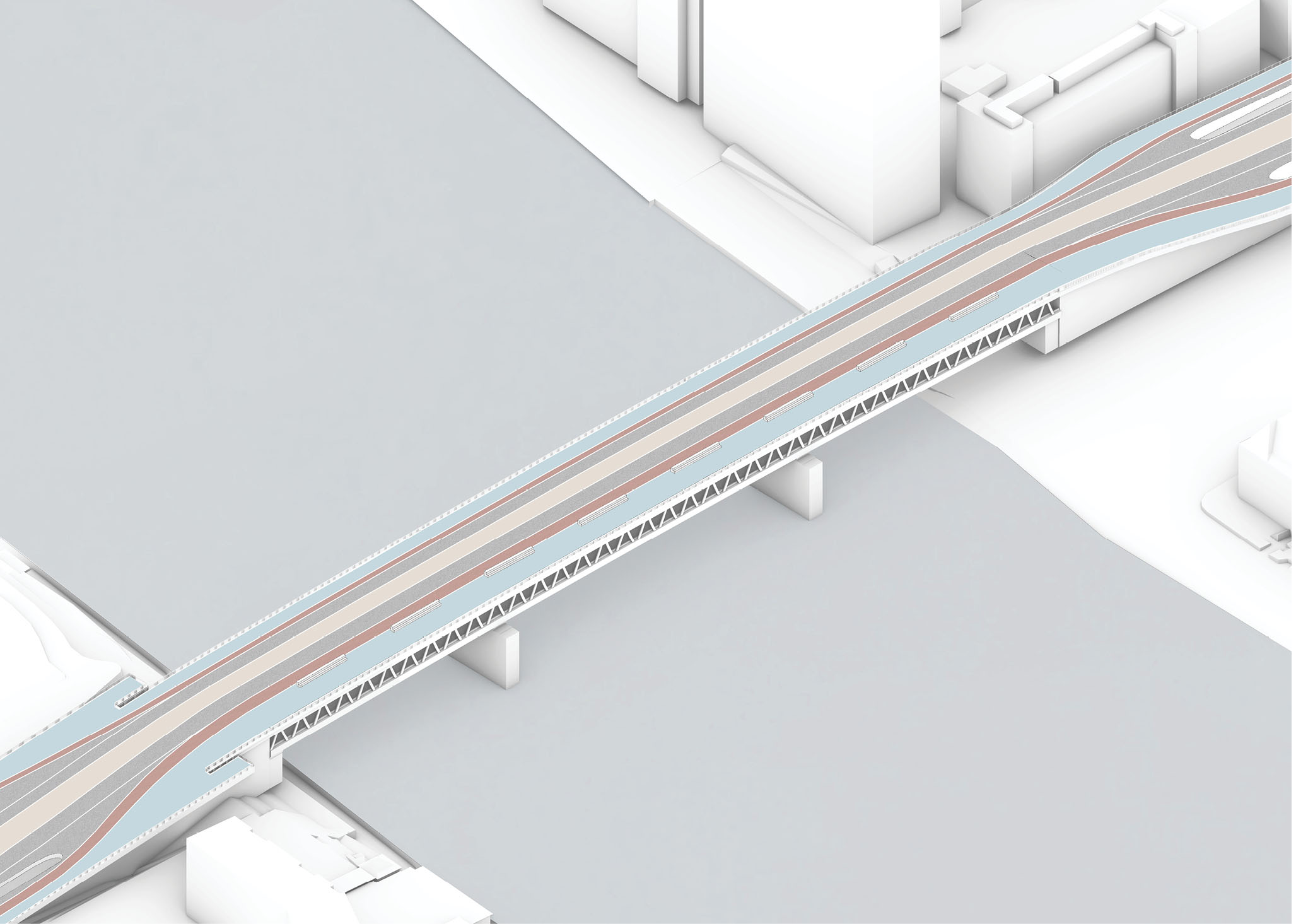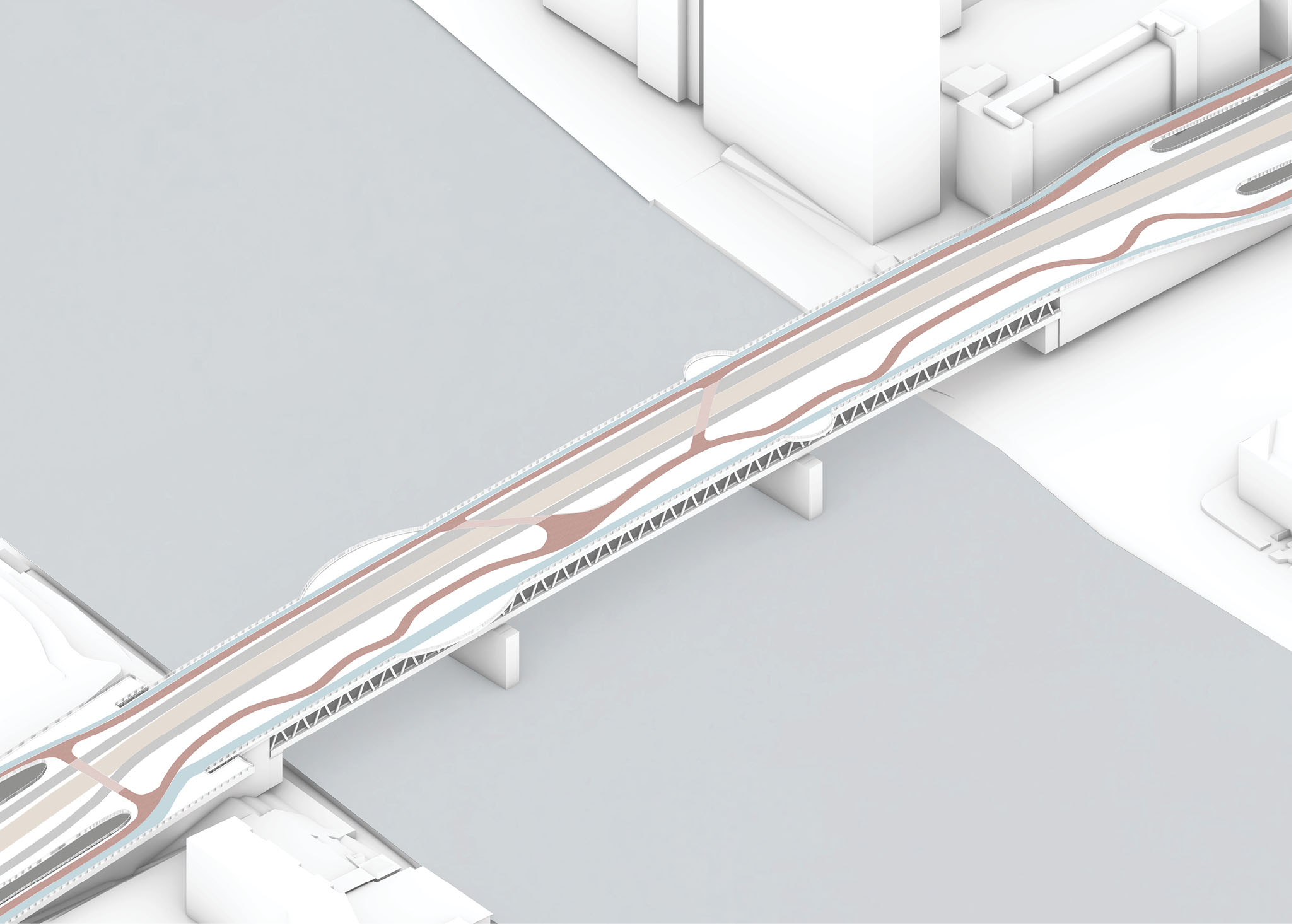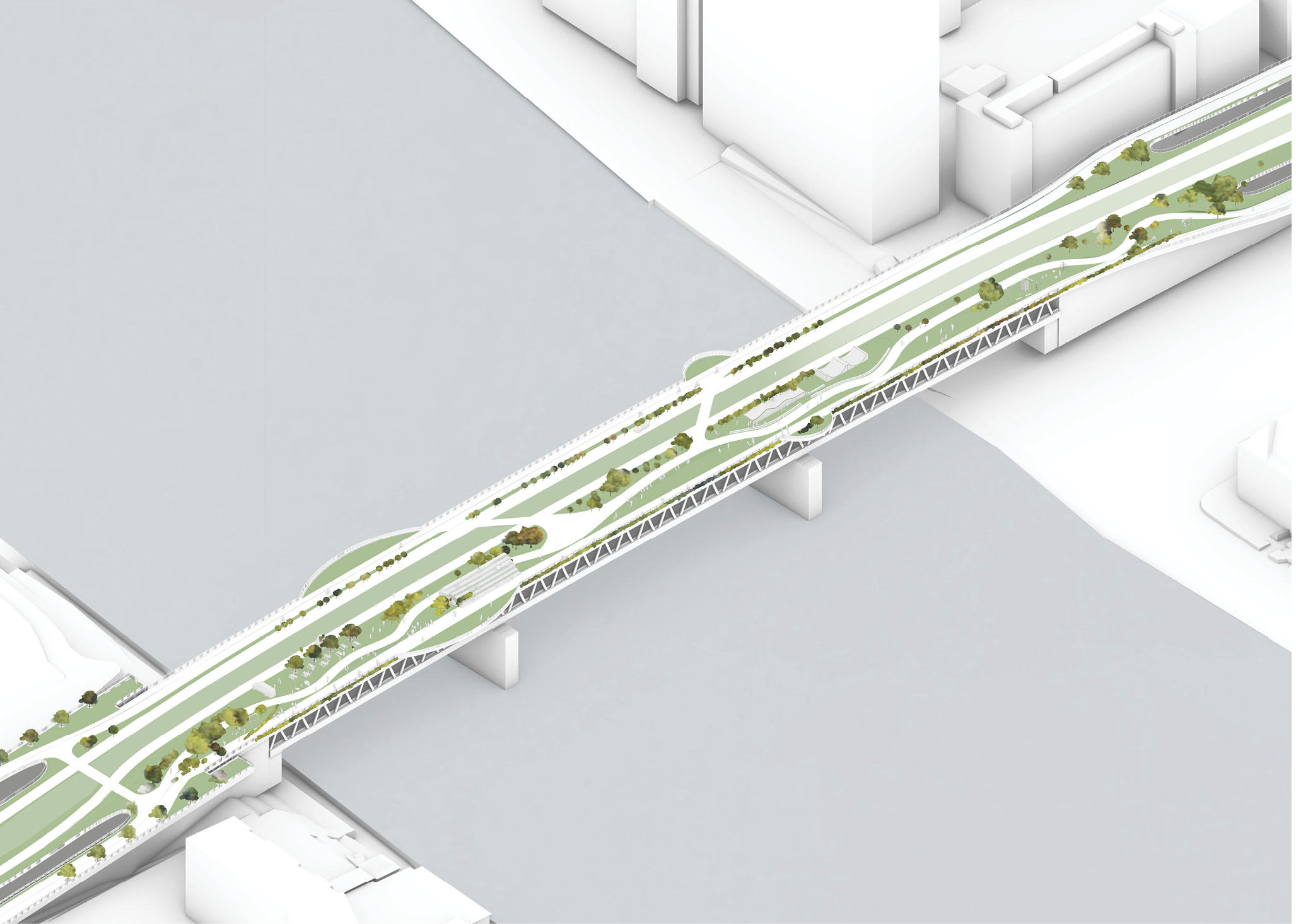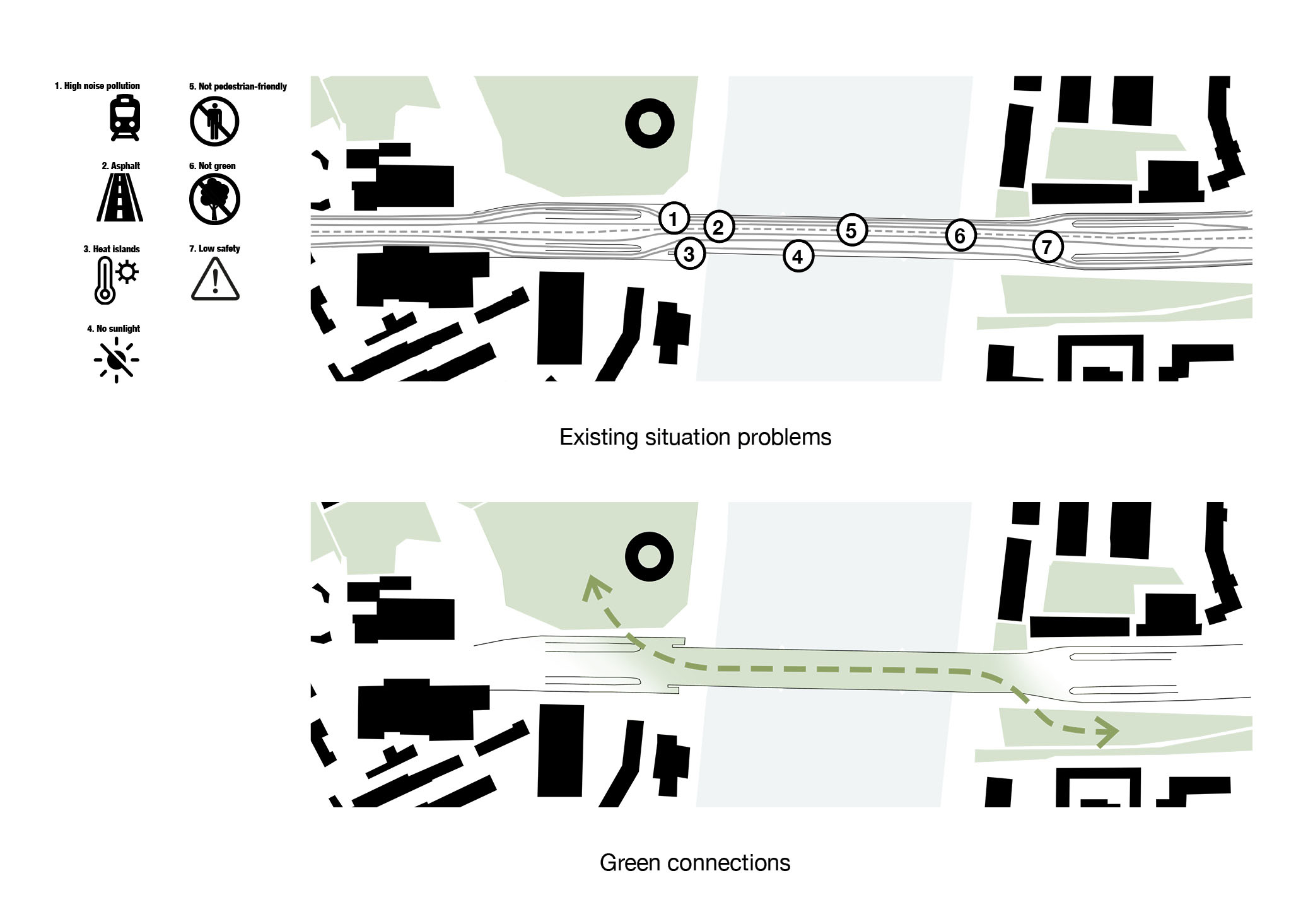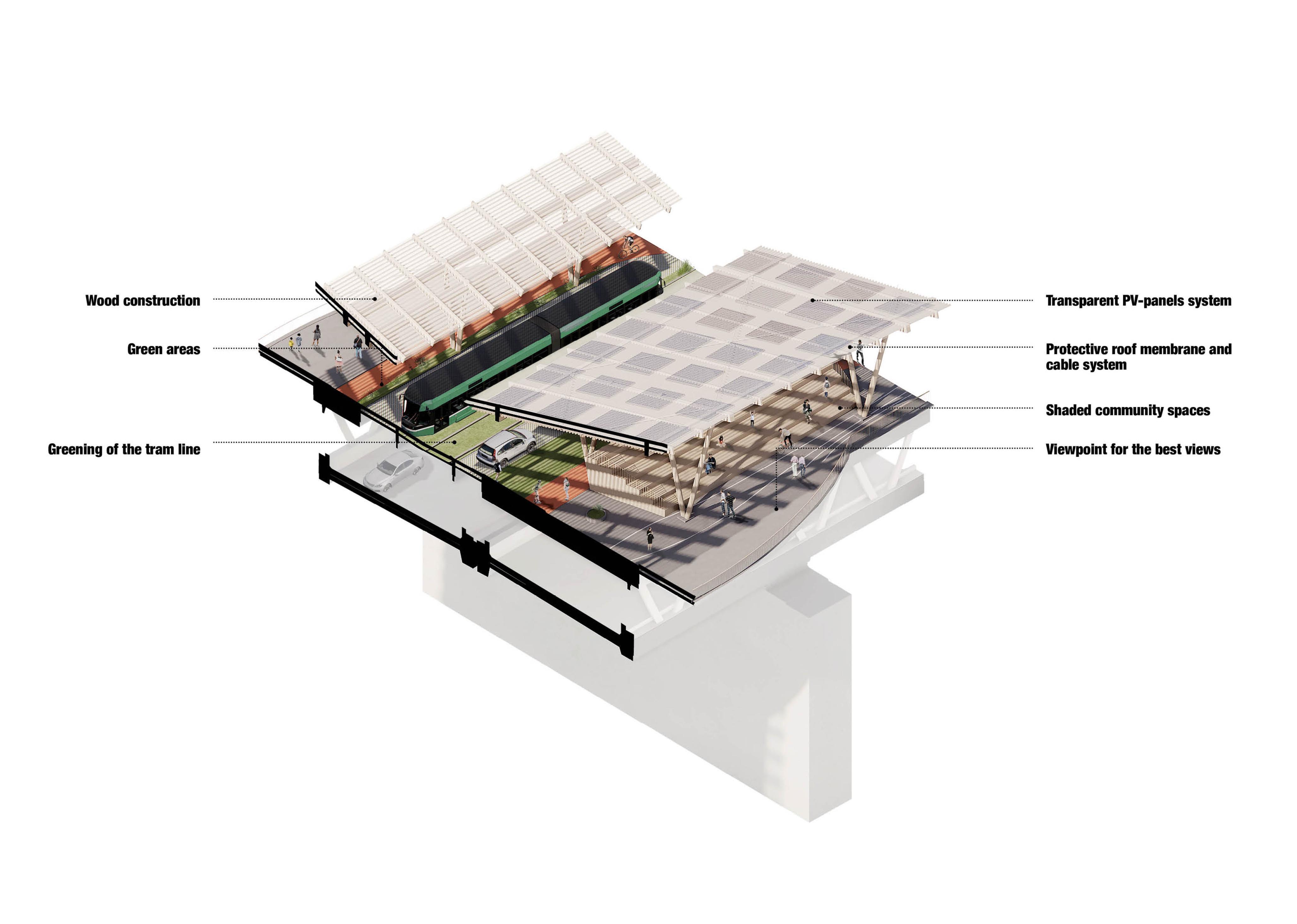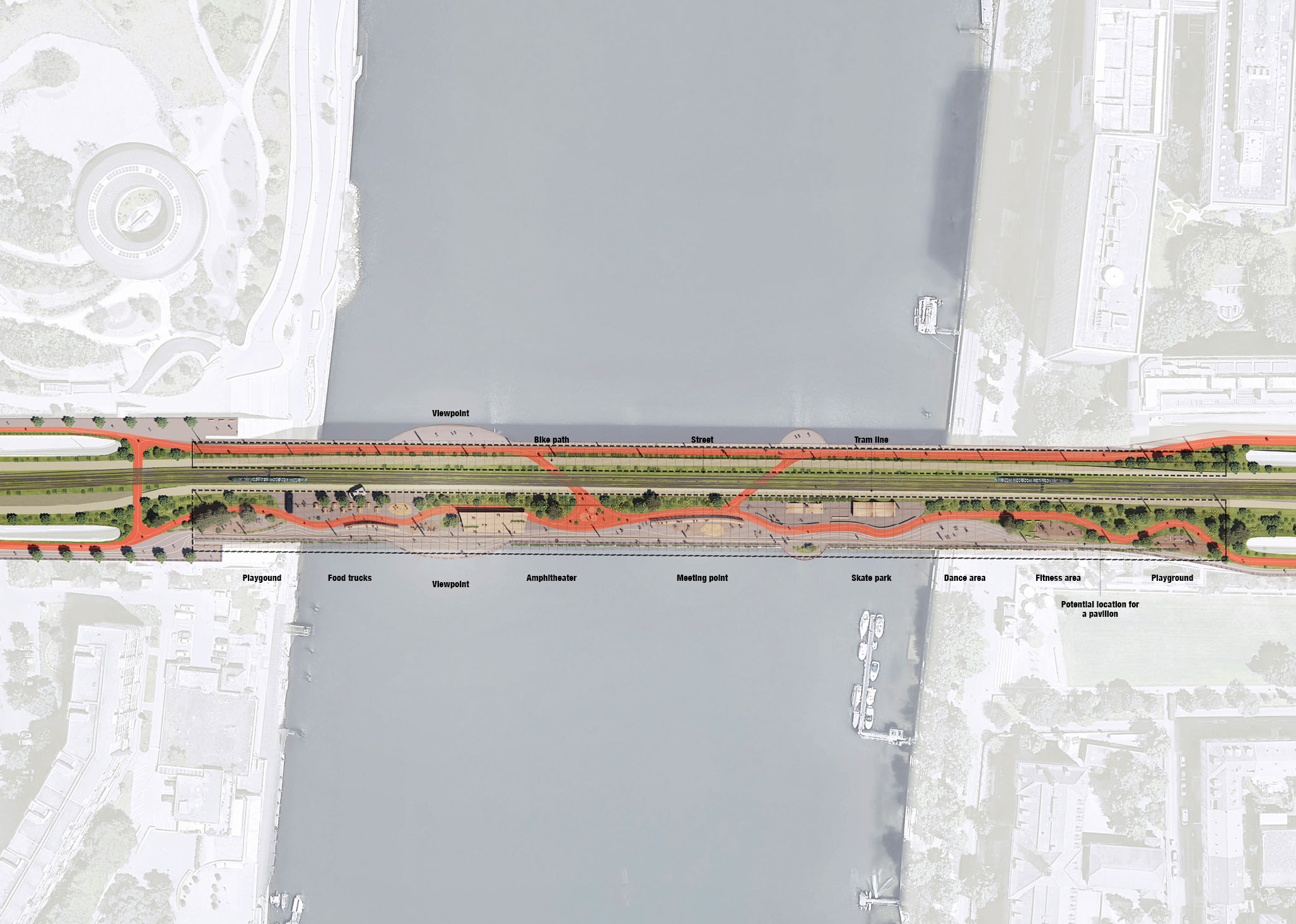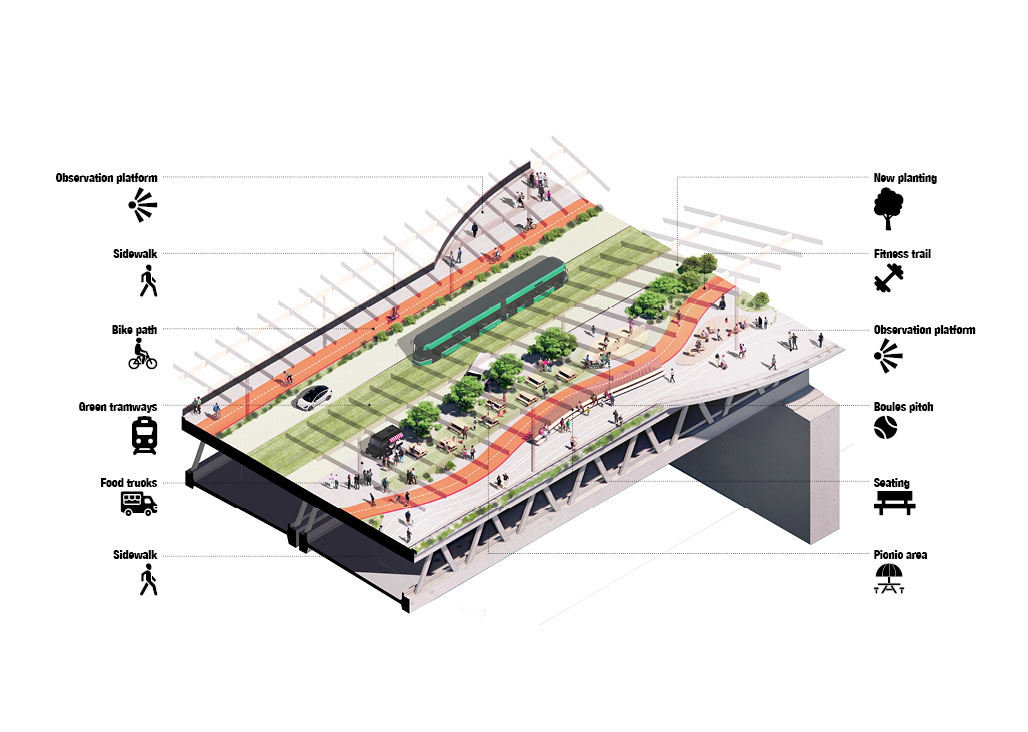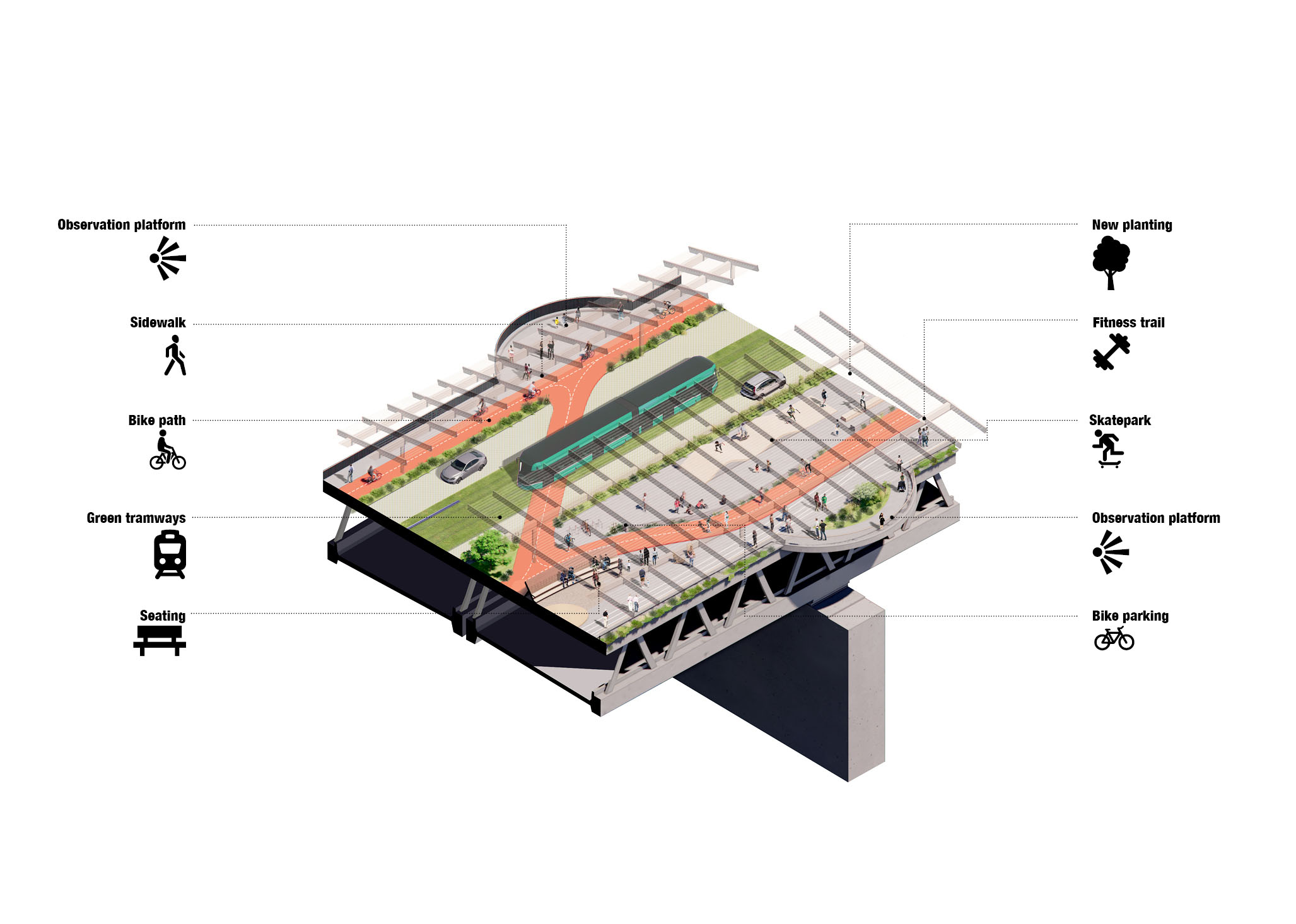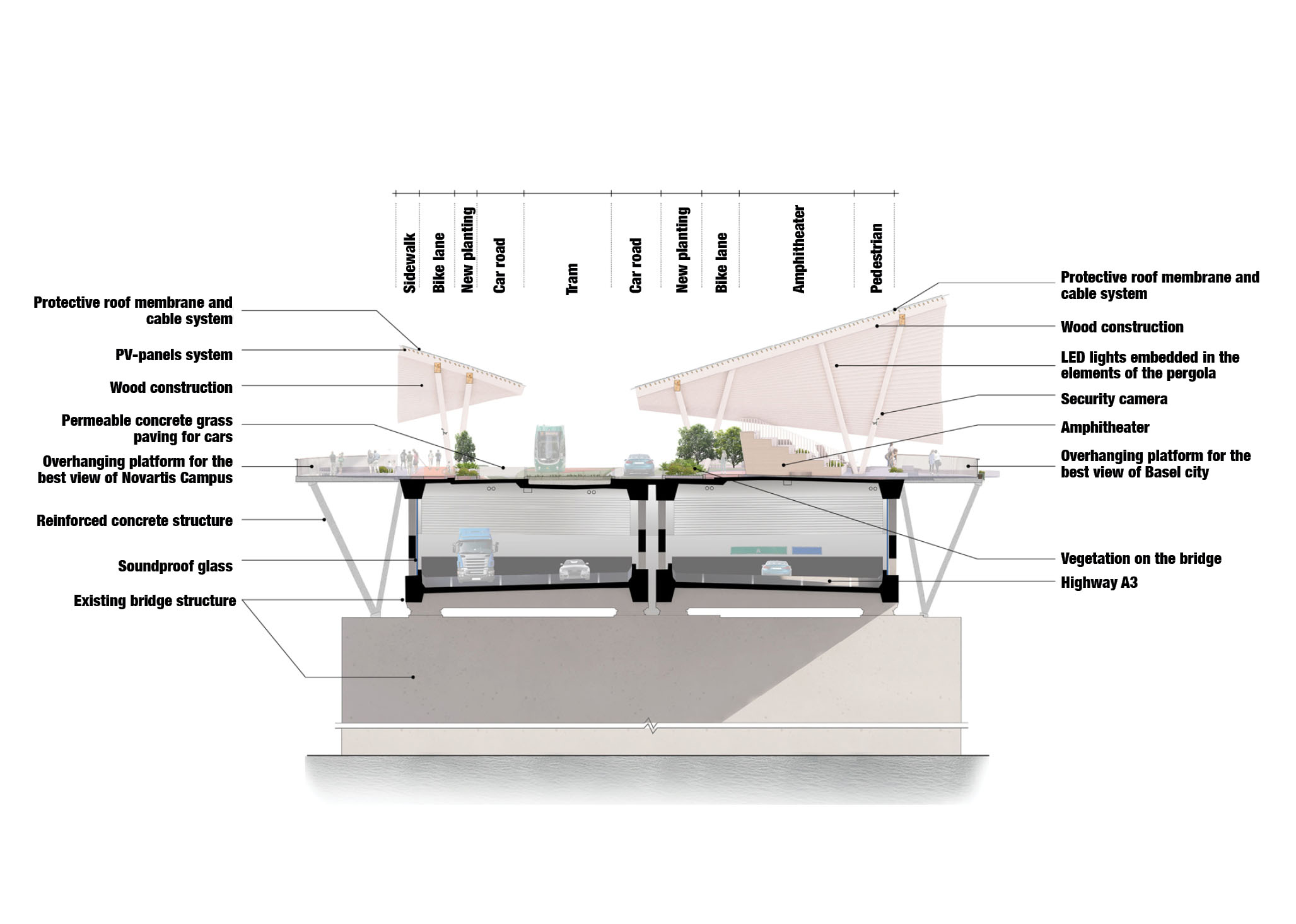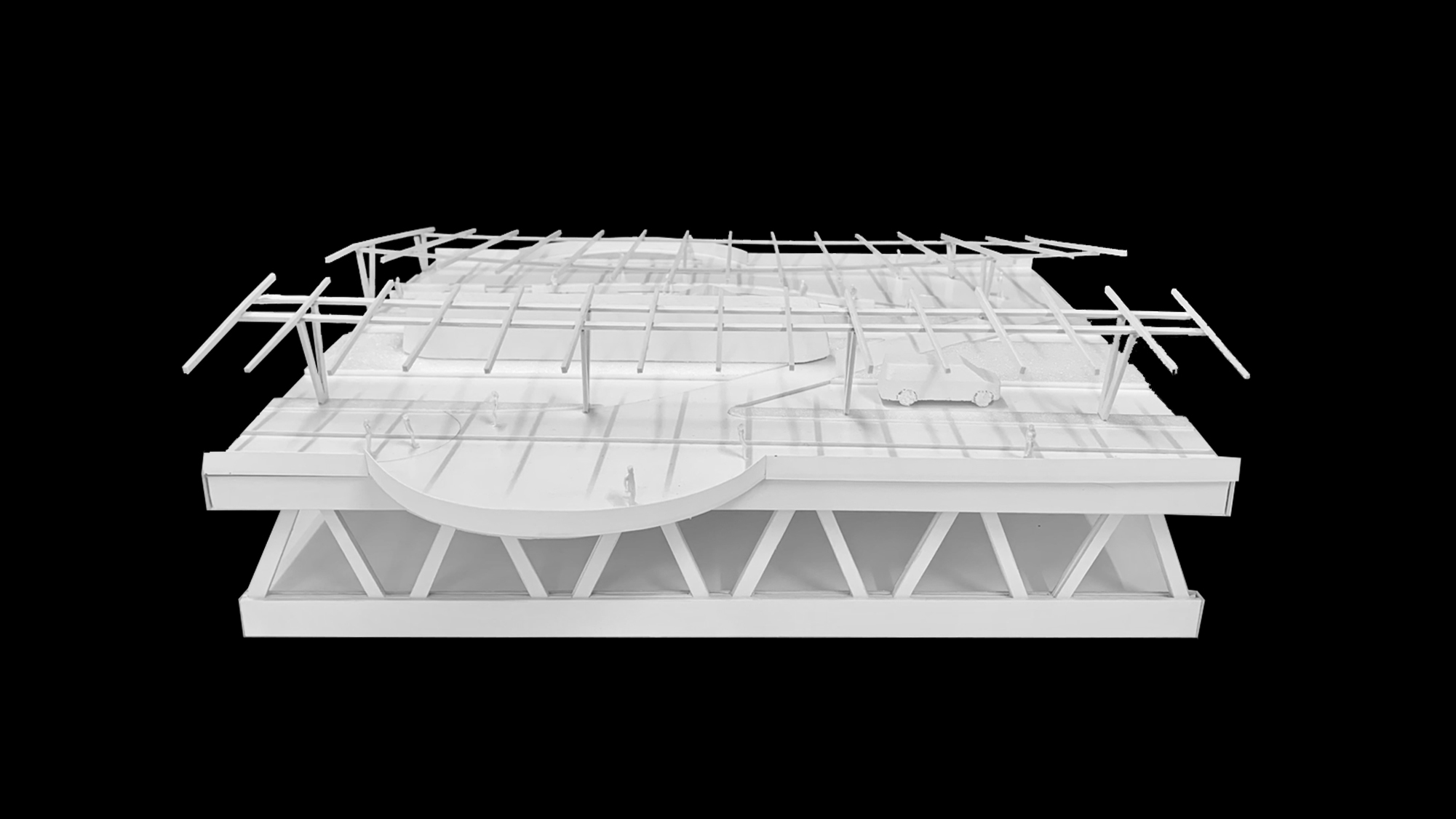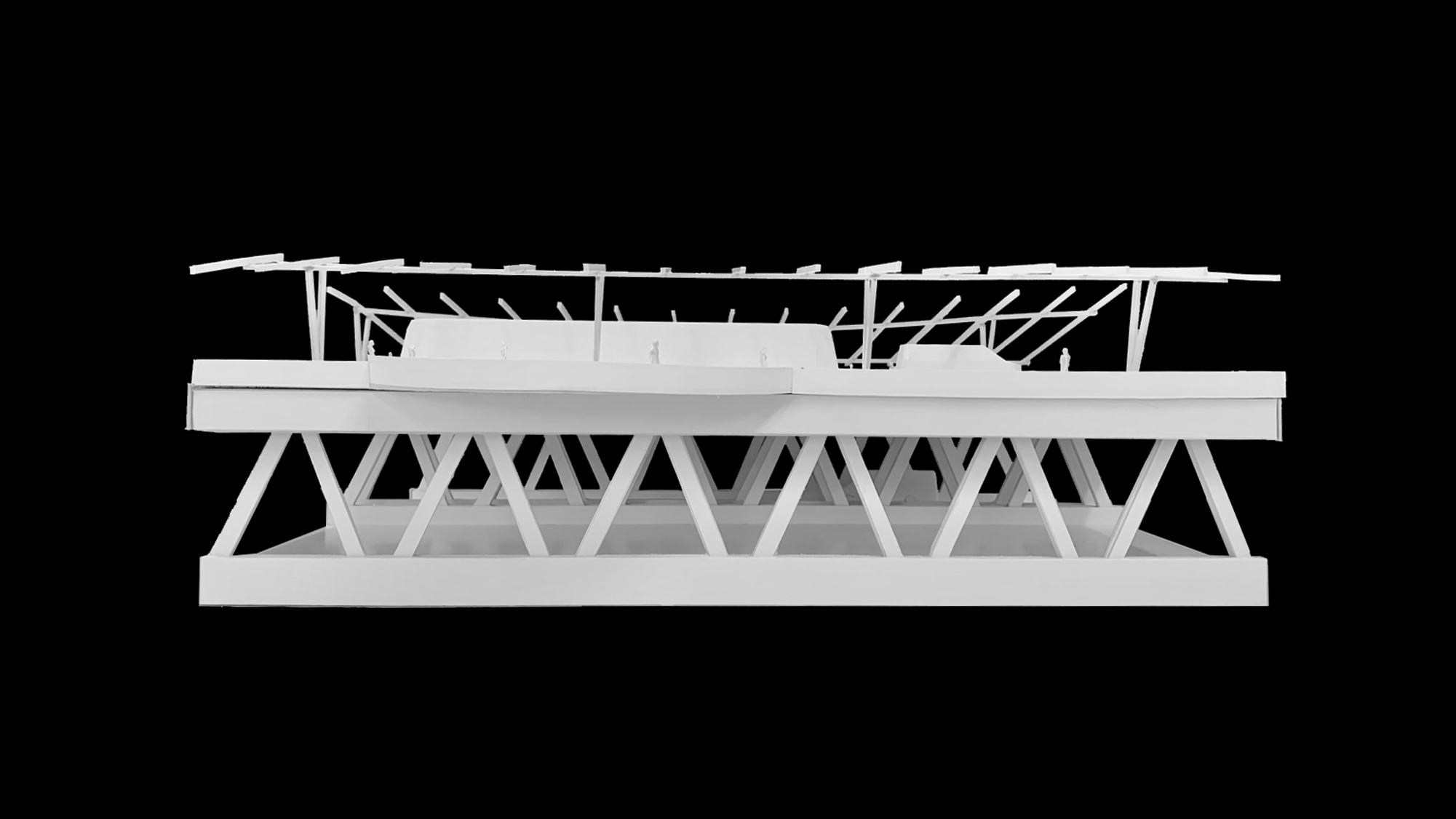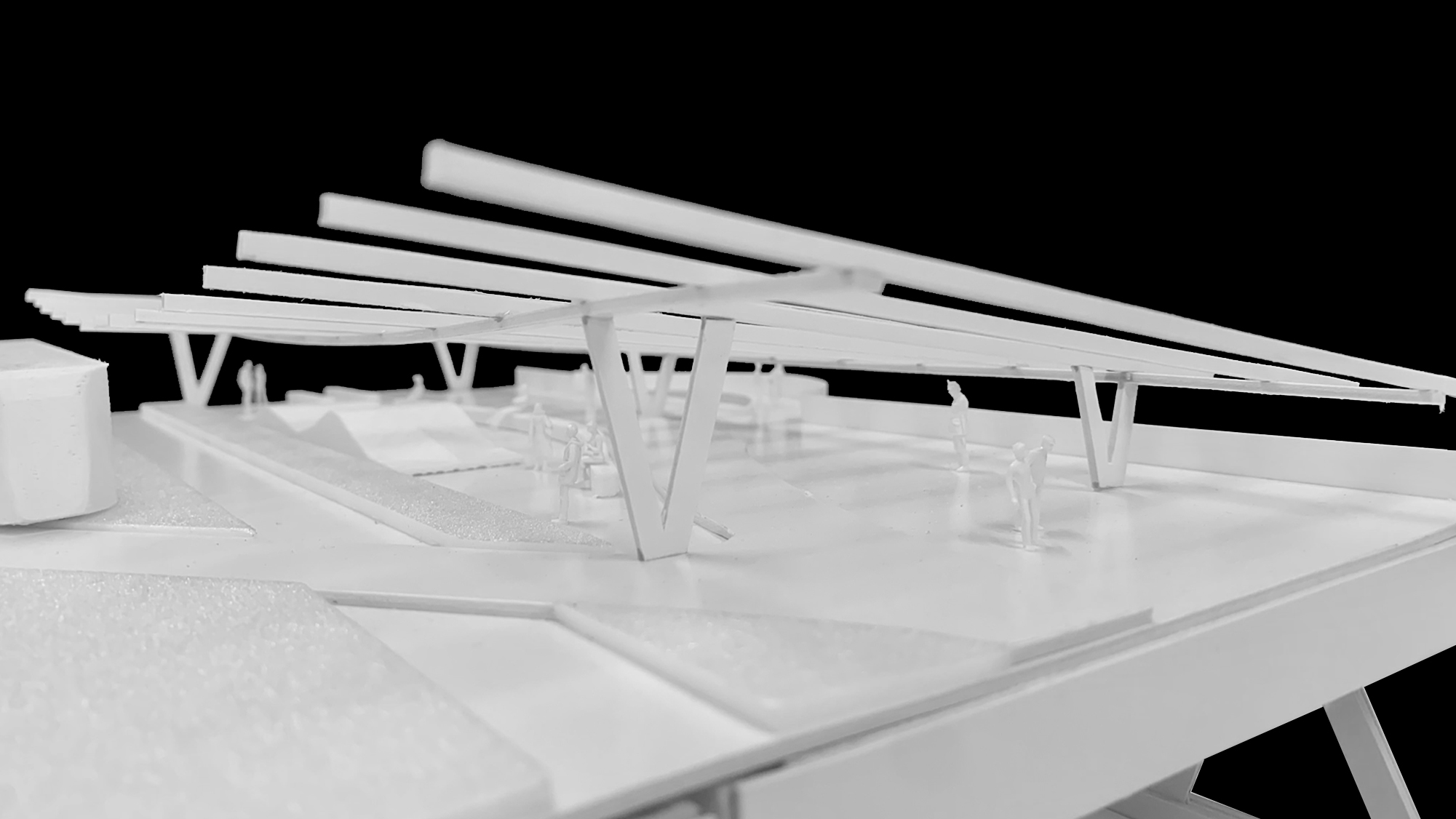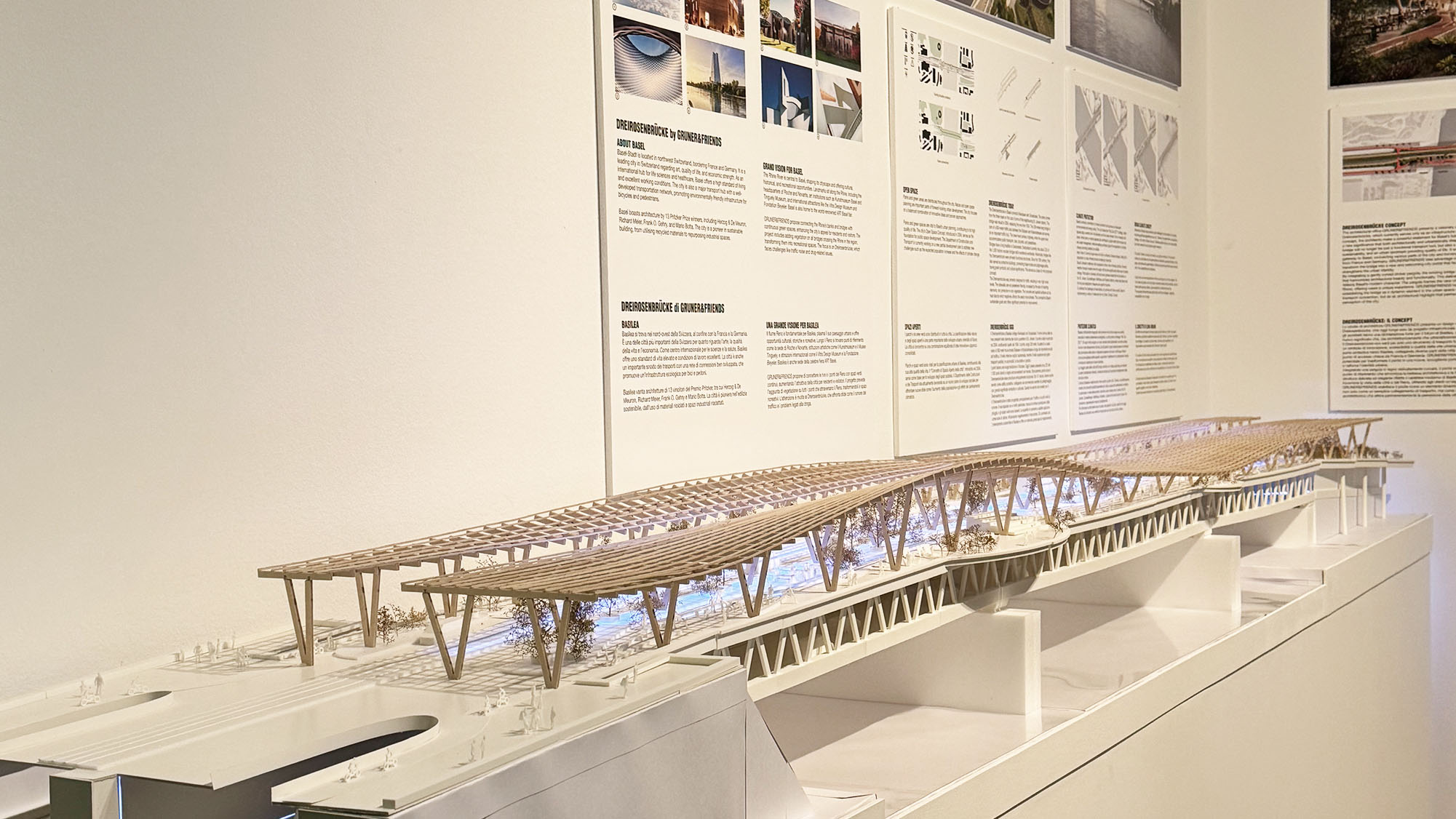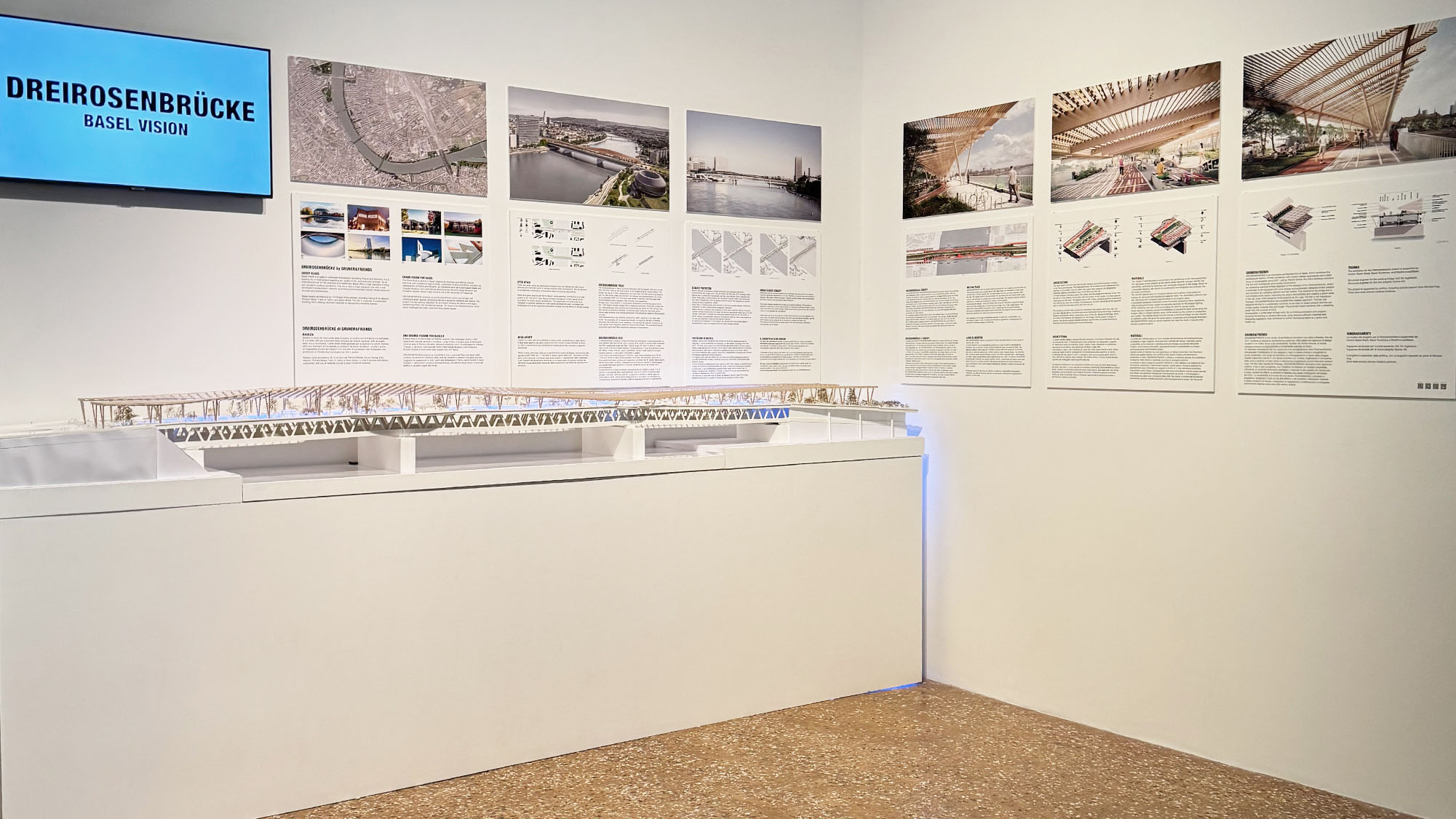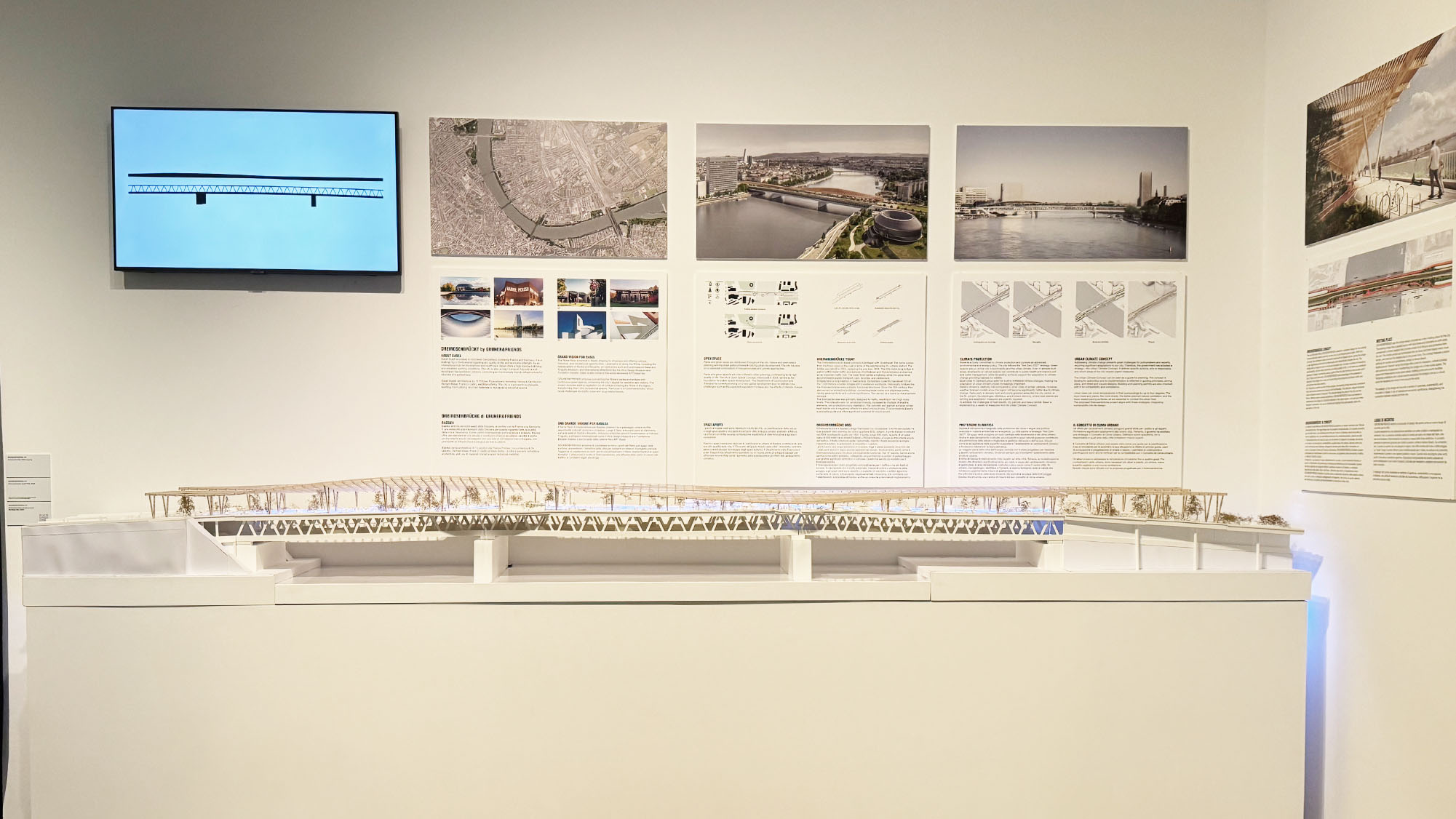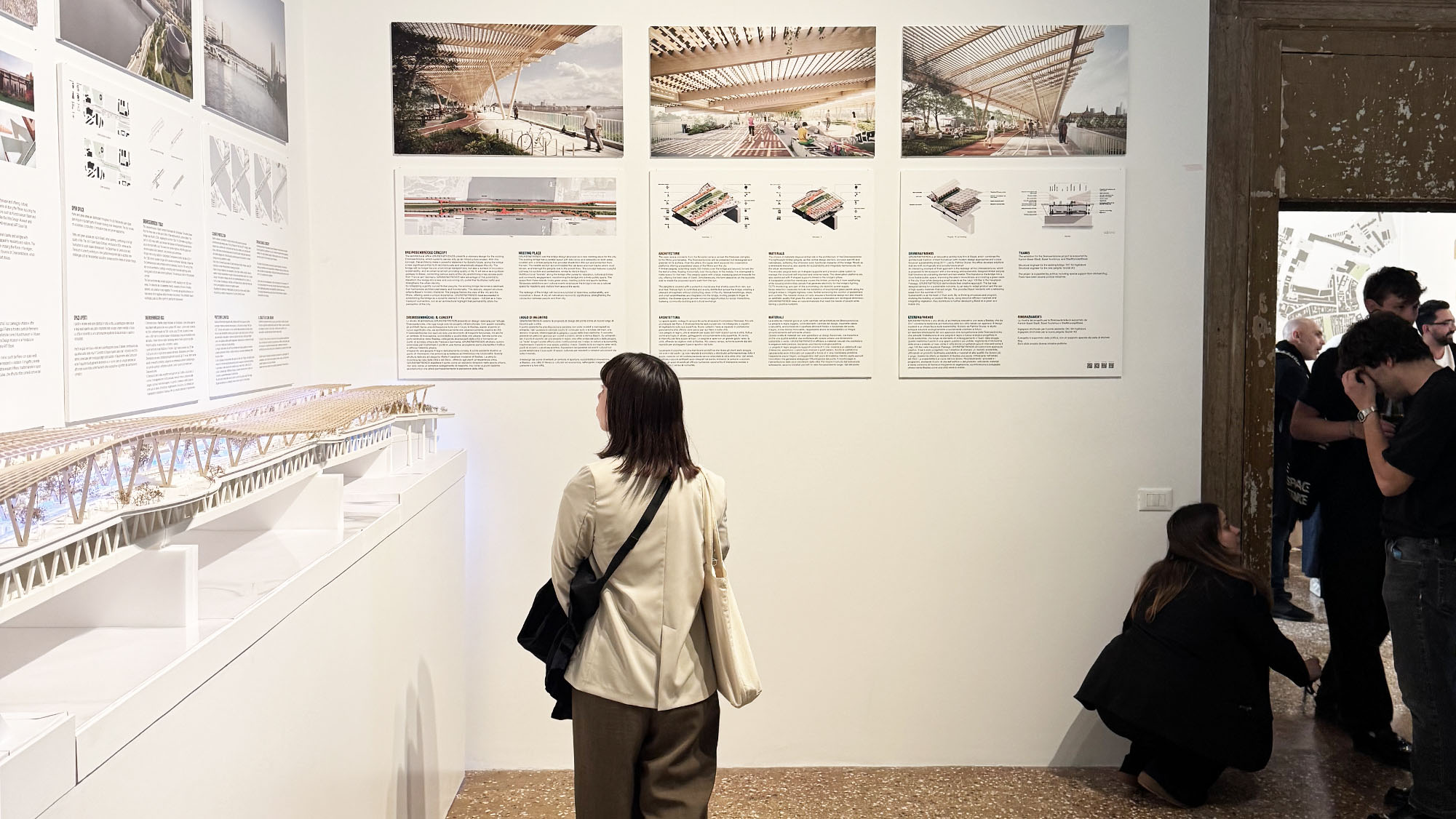DREIROSENBRÜCKE
Standort:
Basel
Programm:
Studie Städtebau
Grösse:
Jahr:
2021-2023/2024 - laufend
Status:
Konzept
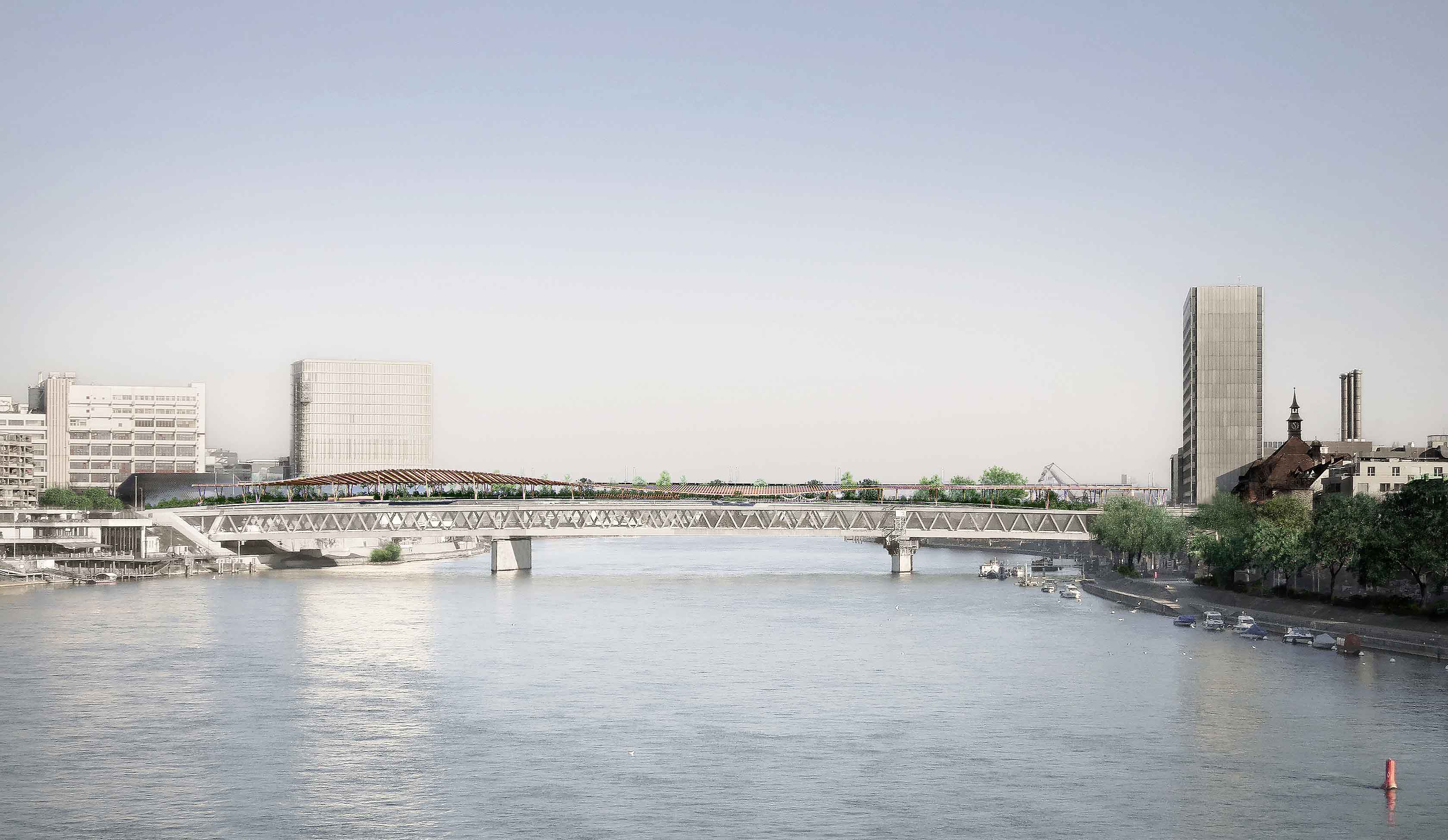
„DREIROSENBRÜCKE: Neues Symbol für Basel, Upgrade der Brücke aus dem Jahr 2004"
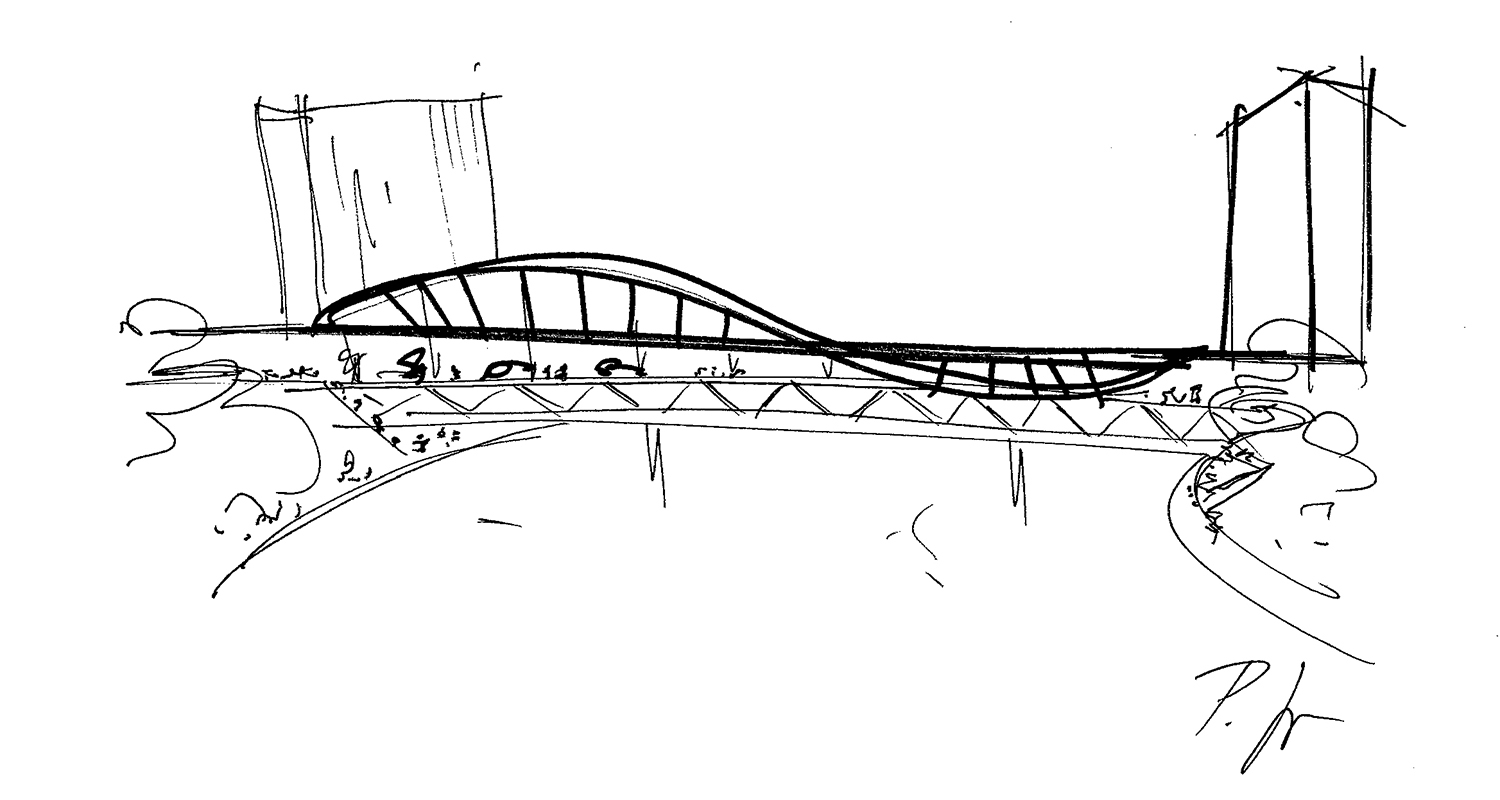
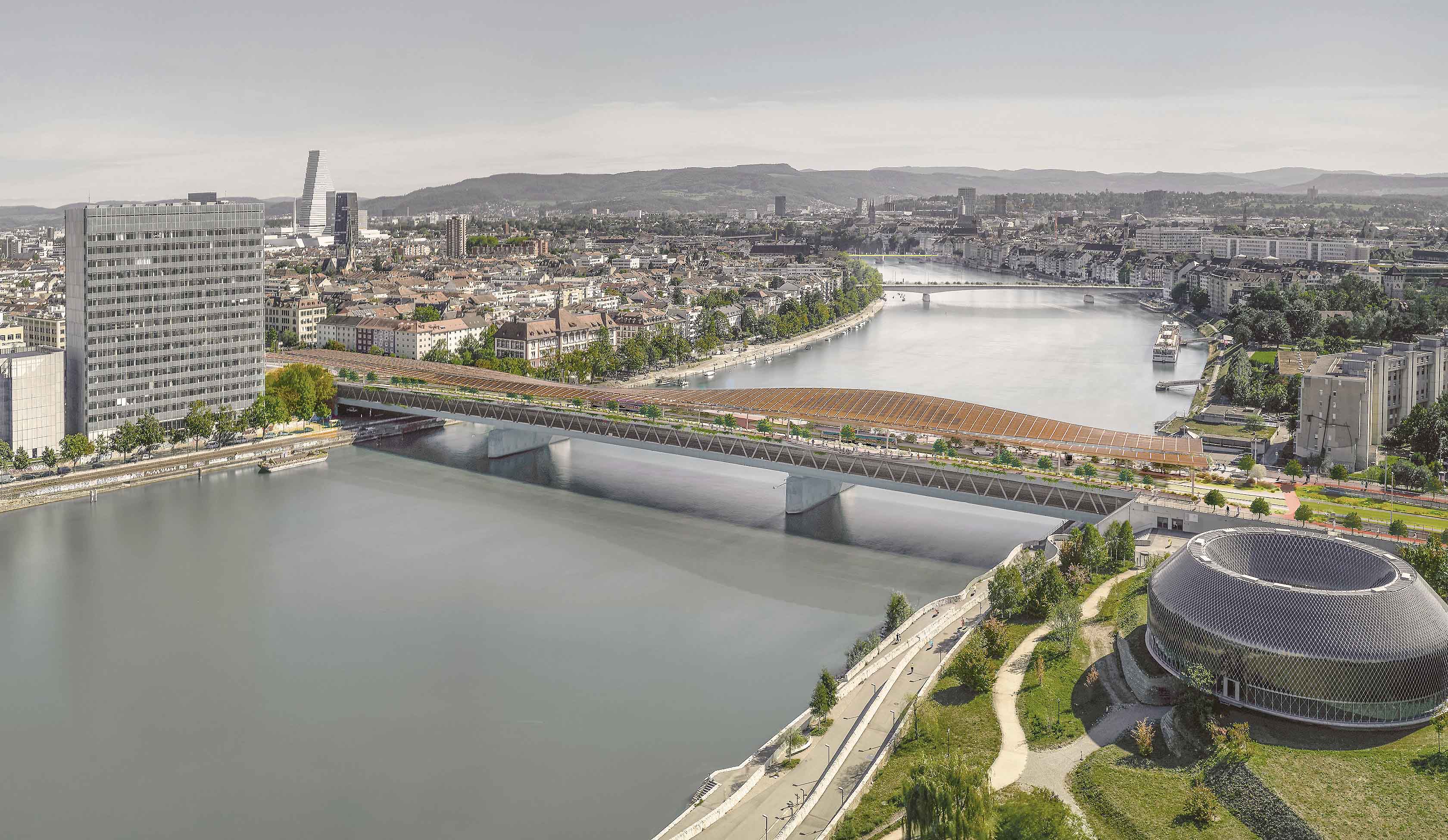
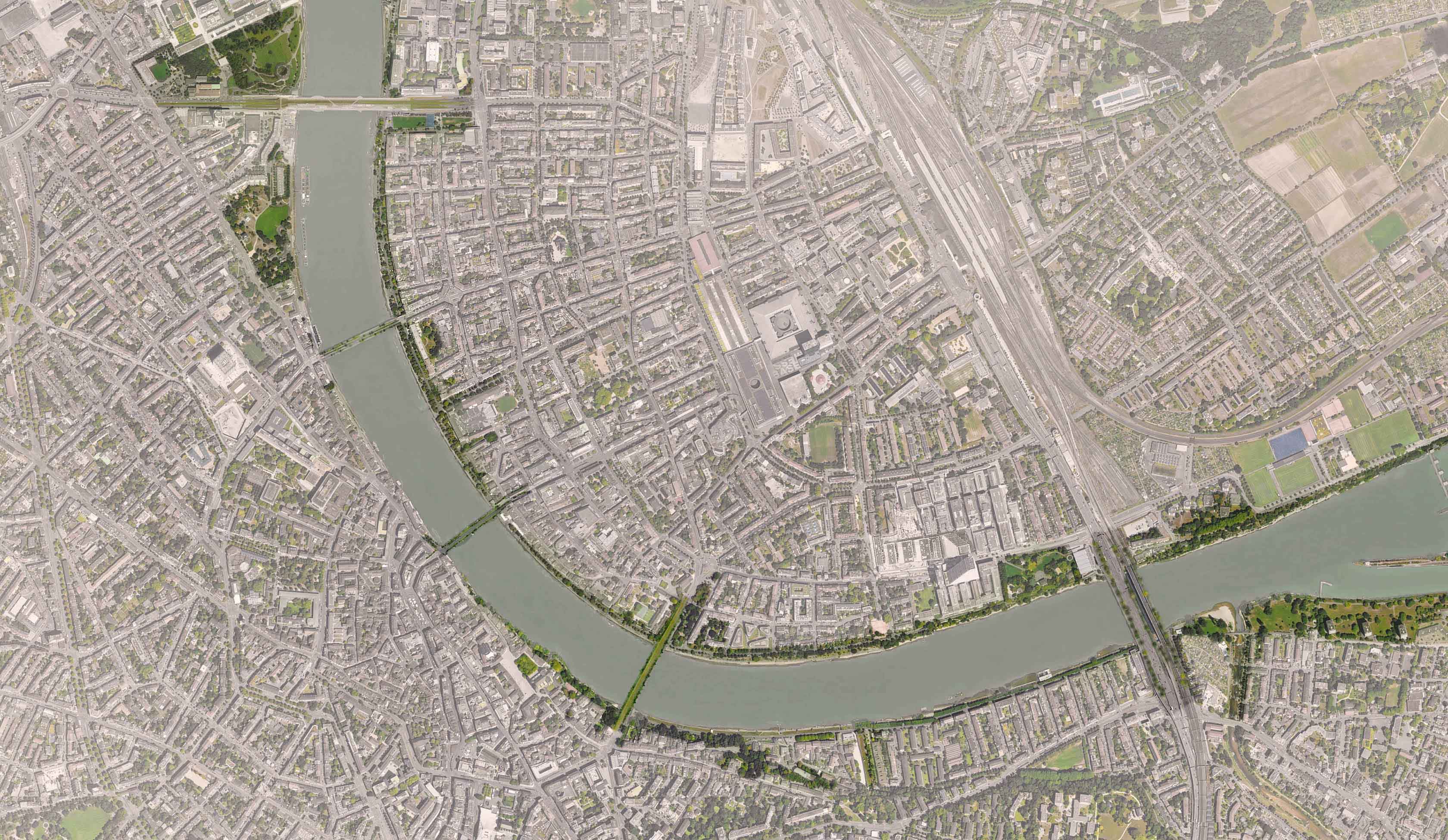
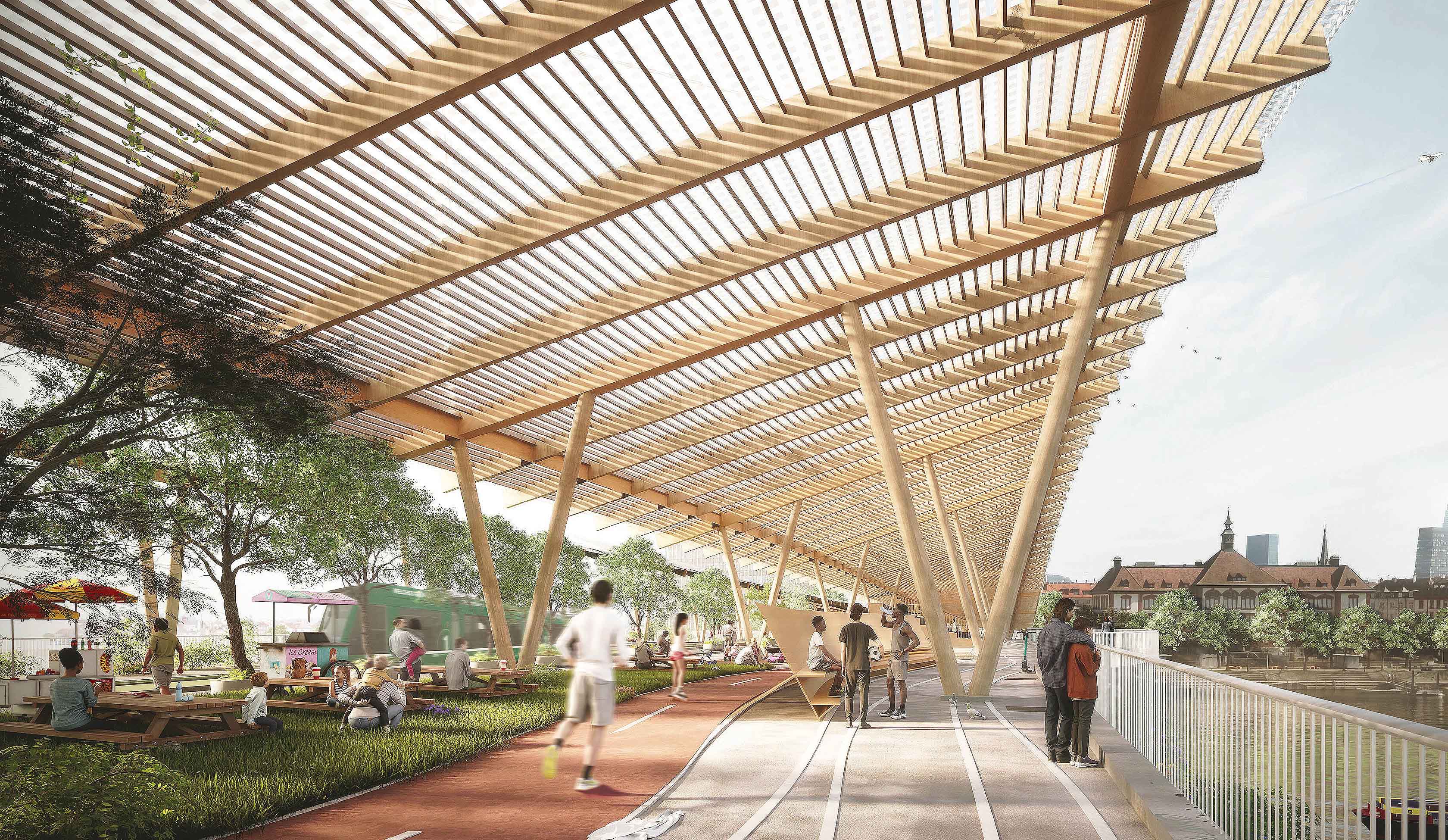
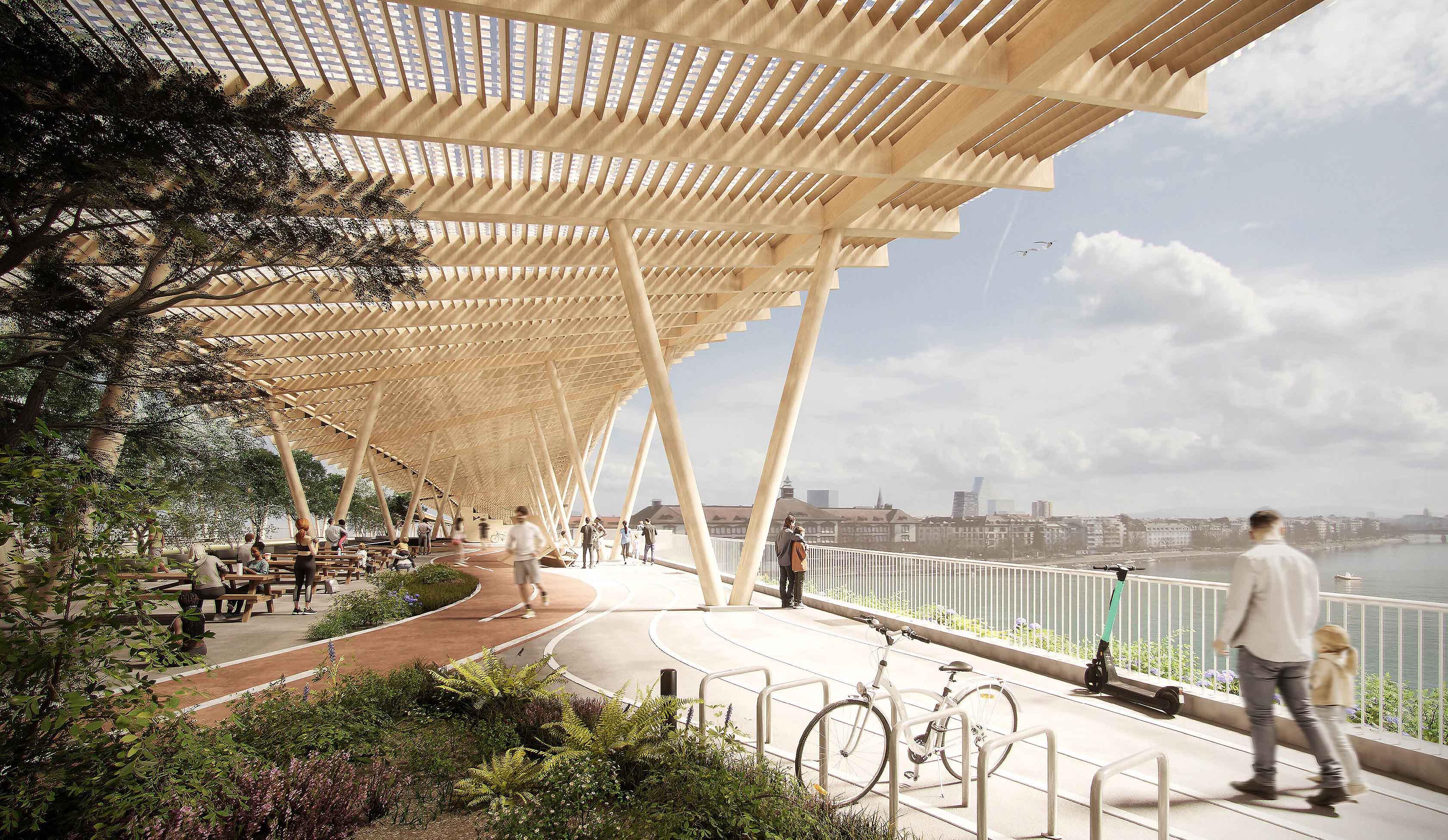
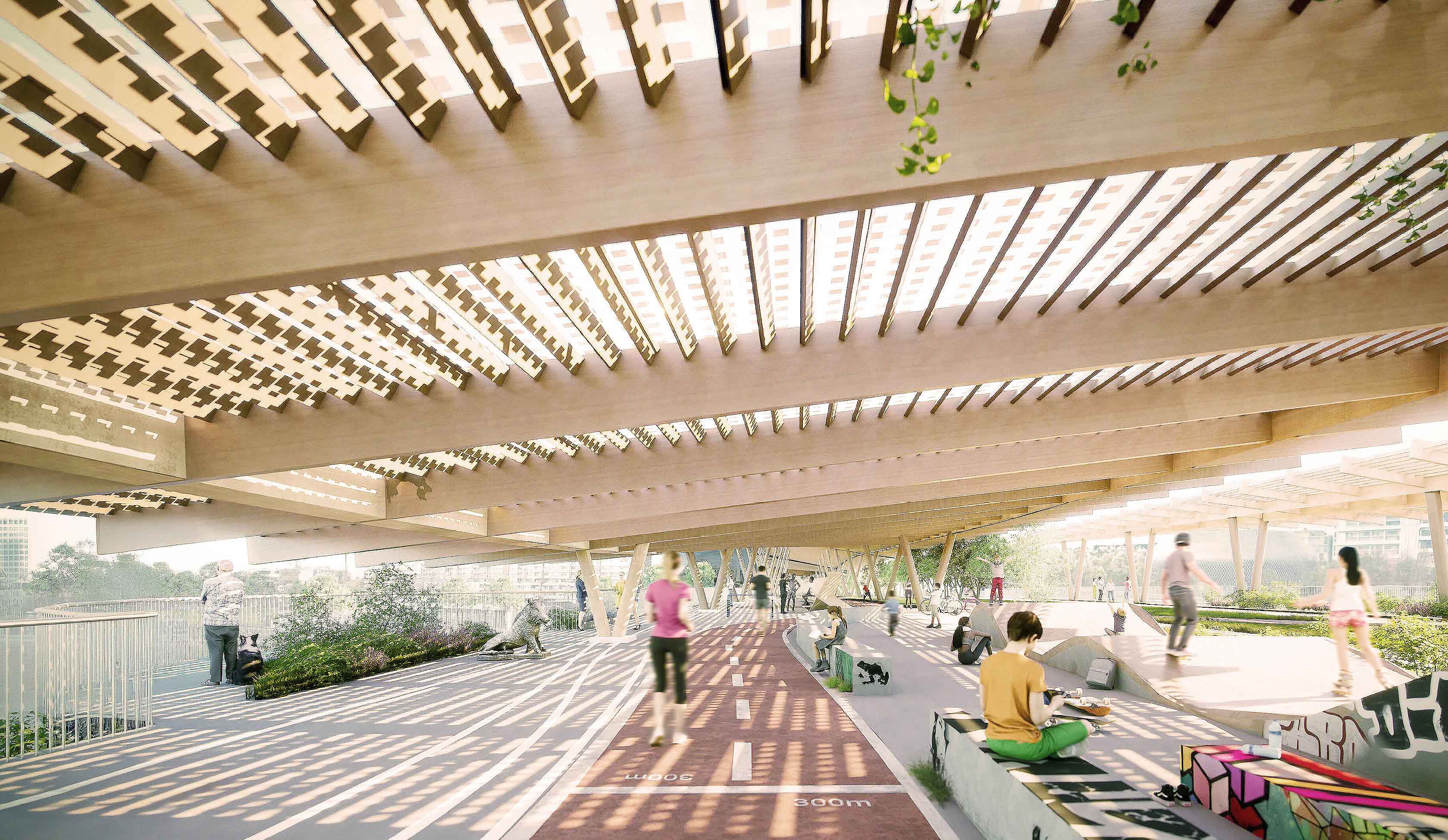



PROJEKTGESCHICHTE
KONTEXT
Die Doppelstock-Dreirosenbrücke, die 2004 fertiggestellt wurde, ersetzte die ursprüngliche Brücke von 1934. Sie spannt sich über 226 Meter in der Länge und fast 30 Meter in der Breite und bietet Platz für Straßenbahnen, Autos, Fahrräder und Fußgänger. Das obere Deck, mit einer kleinen offenen Allee, die zum Basler Stadtzentrum hin ausgerichtet ist, ist ein autogerechter, hart befestigter Platz ohne Fußgänger-Schutz. Die Brücke ist nur ein Teil der Trennung zwischen der Elsässerstrasse und der Klybeckstrasse, einer weitläufigen Beton- und Asphaltzone und einem der größten urbanen Plätze Basels, der zum Hitzeinsel-Effekt der Stadt beiträgt. Sie ist ein ikonisches Tor zum Rhein, das die Schweiz von Frankreich und Deutschland aus verbindet.
KONZEPT
Die lange Geschichte der Schweizer Brücke wird als gestalterische Ressource genutzt, um die Dreirosenbrücke zu verbessern und sie einladender, sicherer und nachhaltiger zu gestalten. Schweizer Brücken aus dem 15. Jahrhundert wurden oft überdacht, sodass sie wie jeder andere urbane Raum ununterbrochen genutzt werden konnten. Sie wurden als Treffpunkte, Märkte, Wechselstuben oder zur Befestigung der Stadt genutzt, in der sie sich befanden. Ziel ist es, die Dreirosenbrücke als lebendigen urbanen Raum, in dem Menschen nicht nur vorbeikommen, sondern sich aufhalten, neu zu erfinden. Entlang der Brücke sind eine durchlässige Dacheindeckung, Grünflächen, Aussichtspunkte und Programminseln integriert, was sie zu einem attraktiveren und einladenderen Reiseziel für Basler und Besucher macht.
INHALT
Das obere Deck der Brücke wird mit Vegetation und weicherem Pflaster neu gestaltet, das an die Wege der verschiedenen Nutzer angepasst ist. Durchlässige Pflastersteine mit kurzem Gras werden für die Straßenbahn- und Fahrzeugspuren verwendet, während recyceltes Ökopflaster für die anderen Spuren zum Einsatz kommt. Inseln zwischen den Wegen bieten Treffpunkte, Grünflächen, Foodtrucks, Sport- und Fitnessbereiche und andere Angebote, die entlang der Brücke verteilt sind und als kulturelle Cluster fungieren. Eine leichte Holzpergola bedeckt die Brücke, um die Sonneneinstrahlung auf den Boden zu verringern und die Nutzer zu empfangen und zu schützen. Sie soll auch dazu beitragen, die Lärmemissionen von Autos und Straßenbahnen, die über die Brücke fahren, zu reduzieren, während PV-Module Energie für benachbarte Gebäude liefern.
PLANS
No items found.
VERFAHREN
No items found.
ZEICHNUNGEN
No items found.
RENDERINGS
No items found.
FORTSCHRITT
No items found.
BAU
No items found.
BILDER
No items found.
TEAM
Client:
Collaborators:
Gruner AG, DIC Engineers
Projektleitung:
Patrice Gruner
Architekten:
Kamile Kesylyte, Agnes Pap, Tahnee Rutter, Leandro Waquim, George Floroiu
Landscape Architects:
Support:
Michael Hug
